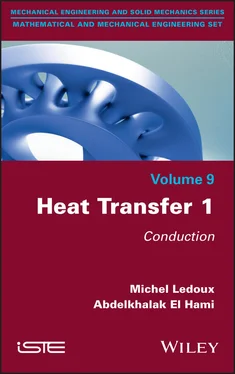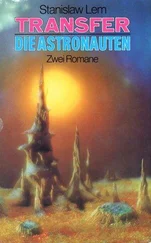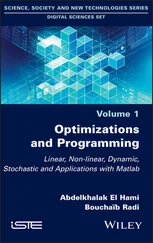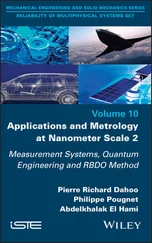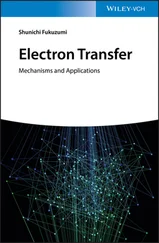1 Cover
2 Title Page Mathematical and Mechanical Engineering Set coordinated by Abdelkhalak El Hami Volume 9
3 Copyright First published 2021 in Great Britain and the United States by ISTE Ltd and John Wiley & Sons, Inc. Apart from any fair dealing for the purposes of research or private study, or criticism or review, as permitted under the Copyright, Designs and Patents Act 1988, this publication may only be reproduced, stored or transmitted, in any form or by any means, with the prior permission in writing of the publishers, or in the case of reprographic reproduction in accordance with the terms and licenses issued by the CLA. Enquiries concerning reproduction outside these terms should be sent to the publishers at the undermentioned address: ISTE Ltd 27-37 St George’s Road London SW19 4EU UK www.iste.co.uk John Wiley & Sons, Inc. 111 River Street Hoboken, NJ 07030 USA www.wiley.com © ISTE Ltd 2021 The rights of Michel Ledoux and Abdelkhalak El Hami to be identified as the authors of this work have been asserted by them in accordance with the Copyright, Designs and Patents Act 1988. Library of Congress Control Number: 2020949611 British Library Cataloguing-in-Publication Data A CIP record for this book is available from the British Library ISBN 978-1-78630-516-9
4 Preface
5 Introduction
I.1. Preamble I.2. Introduction I.2. Introduction Thermal science is to thermodynamics as decree means is to law. It answers the following question – which all good leaders must (or should) ask themselves whenever they have an “idea”: “How would this work in practice?”. In a way, thermal science “implements” thermodynamics, of which it is a branch. A thermodynamics specialist is a kind of energy economist. Applying the first principle, they create a “grocery store”. With the second principle, they talk about the quality of their products. I add or remove heat from a source or work from a system. And the temperature, among other things, defines the quality of the energy for me. But by what means do I take or do I give ? Even calculations of elementary reversible transformations do not tell us by what process heat passes from a source to a system. Thermal science specifies how, but “evacuates” the work. If in a given problem related to, for example, a convector where electrical energy (therefore in the “work” category) appears, it is immediately dissipated into heat by the Joule effect. Three heat transfer modes can be identified: conduction and radiation – which can be seen separately, although they are often paired up – and convection, which is by nature an interaction of fluid mechanics and conduction. Dividing the study of thermal science into three volumes is the result of logic. Presenting this work in three volumes is somewhat arbitrary; in our opinion, however, this split was necessary in order to keep the volumes in the collection a reasonable size. The first volume, entitled Heat Transfer 1 , is dedicated to “classic” approaches (analytical treatment) to conduction, which will be of greater interest to readers who are looking for “simple” prediction methods. The second volume, entitled Heat Transfer 2 , is dedicated to “classic” approaches (analytical treatment) of radiation, and assembles digital approaches of these various transfer modes. It is aimed at engineers or researchers who want to resolve more complex problems. The third volume, entitled Heat Transfer 3 , is focused on convection transfers. As we have already pointed out, all of these transport operations are rarely pure and lead to problems that involve three inter-connecting transfer modes, conduction, convection and radiation. Before our readers immerse themselves in a text that, despite our best efforts, remains intellectually demanding, we propose a short text that is a little lighter .
I.3. Interlude
6 1 The Problem of Thermal Conduction: General Comments1.1. The fundamental problem of thermal conduction 1.2. Definitions 1.3. Relation to thermodynamics
7 2 The Physics of Conduction2.1. Introduction 2.2. Fourier’s law 2.3. Heat equation 2.4. Resolution of a problem 2.5. Examples of application
8 3 Conduction in a Stationary Regime3.1. Thermal resistance 3.2. Examples of the application of thermal resistance in plane geometry 3.3. Examples of the application of the thermal resistance in cylindrical geometry 3.4. Problem of the critical diameter 3.5. Problem with the heat balance
9 4 Quasi-stationary Model 4.1. We can perform a simplified calculation, adopting the following hypotheses 4.2. Method: instantaneous thermal balance 4.3. Resolution 4.4. Applications for plane systems 4.5. Applications for axisymmetric systems
10 5 Non-stationary Conduction 5.1. Single-dimensional problem 5.2. Non-stationary conduction with constant flow density 5.3. Temperature imposed on the wall: sinusoidal variation 5.4. Problem with two walls stuck together 5.5. Application examples
11 6 Fin Theory: Notions and Examples6.1. Notions regarding the theory of fins 6.2. Examples of application
12 Appendices Appendix 1: Heat Equation of a Three-dimensional System A1.1. Reminder: writing the Fourier law A1.2. Heat equation Appendix 2: Heat Equation: Writing in the Main Coordinate Systems A2.1. The elementary volume A2.2. Problem with variable physical properties A2.3. Problem with constant physical properties A2.4. Time-independent regime A2.5. Writing the Fourier law. How can the expression for the gradient be found? Appendix 3: One-dimensional Heat Equation A3.1. Case of an axisymmetric system A3.2. Case of a spherical system Appendix 4: Conduction of the Heat in a Non-stationary Regime: Solutions to Classic Problems Appendix 5: Table of erf (x), erfc(x) and ierfc(x) Functions Appendix 6: Complementary Information Regarding Fins A6.1. Rectangular wings. Solutions to classic problems Appendix 7: The Laplace Transform A7.1. Definition A7.2. Derivatives and integrals A7.3. We will give two examples A7.4. Resolution of a problem of single-dimensional non-stationary transfer Appendix 8: Reminders Regarding Hyperbolic Functions
13 References
14 Index
15 End User License Agreement
1 Chapter 2 Figure 2.1. Diagram of a simplified device for determining Fourier’s law. For a ... Figure 2.2. Linear temperature profile in a homogeneous material. For a color ve... Figure 2.3. Case of two infinitely close isotherms; relationship with the gradie... Figure 2.4. Establishment of the mono-dimensional heat equationFigure 2.5. Establishment of the single-dimensional heat equation Axisymmetric g...
2 Chapter 3Figure 3.1. Thermal resistance. Electrical analogy for three superimposed walls....Figure 3.2. Thermal resistance. Electrical analogy for a composite wall. For a c...Figure 3.3. An igloo (source: chalettime.com). For a color version of this figur...Figure 3.4. The Great Wall of China. For a color version of this figure, see www...Figure 3.5. Different types of glazingFigure 3.6. Dimensional drawing of the French windowFigure 3.7. Slate mounted on a battenFigure 3.8. Dimensional drawing of the roofFigure 3.9. Cross-section through the device
3 Chapter 4Figure 4.1. Representation of the castle. For a color version of this figure, se...Figure 4.2. The icebox, the ancestor of the fridge. For a color version of this ...Figure 4.3. An example of an isba and a model of it for the problem. For a color...Figure 4.4. The bottle of Vodka and its model. For a color version of this figur...Figure 4.5. The bottle and its modelFigure 4.6. The can and its modelFigure 4.7. A yurt and its heating. For a color version of this figure, see www....
4 Chapter 5Figure 5.1. Evolution of a “thermal ladder”. Representation of the reduced tempe...Figure 5.2. Non-stationary conduction: constant flow density imposed on a face a...Figure 5.3. The functions erf ξ, erf ξ and ierfc ξFigure 5.4. Non-stationary conduction: sinusoidal temperature on a faceFigure 5.5. Non-stationary conduction: contact of two bodies at different temper...Figure 5.6. The iron and its pile of laundryFigure 5.7. Diagram of an eggFigure 5.8. Initial calculationFigure. 5.9. A block for weldingFigure. 5.10. The weldingFigure 5.11. Diagram of the deviceFigure 5.12. Diagram of a tin weld
Читать дальше
